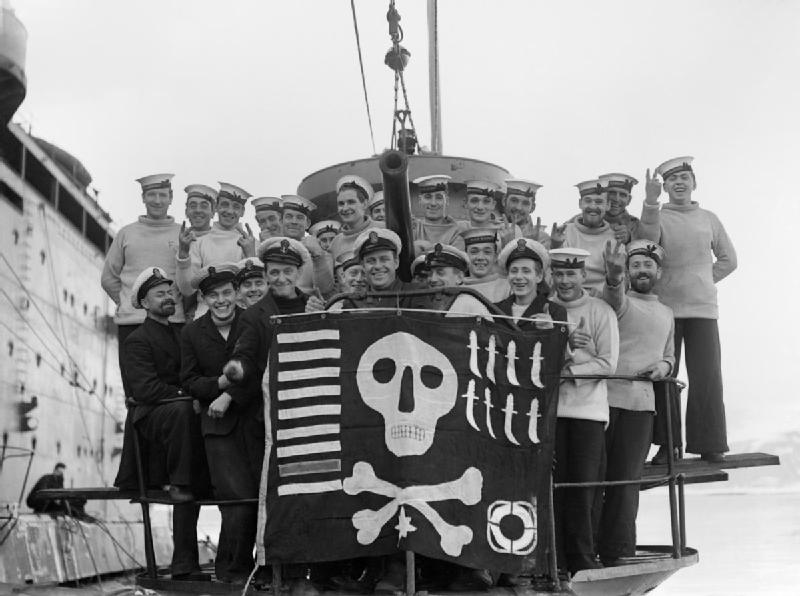Ali Kefford on the origins of a colourful naval tradition:

Members of the crew of HMS Utmost with their “Jolly Roger” success flag, photographed alongside HMS Forth in Holy Loch, on their return from a year’s service in the Mediterranean, 6 February 1942. (via Wikipedia)
Sir Arthur Wilson was infamous within the Royal Navy for being an admiral with a tetchy temper. His nickname – Old ’Ard ’Art – was a bad joke about his uncaring nature.
Yet a verbal broadside he delivered in 1901 was to spawn one of the Submarine Service’s most loved and deeply ingrained traditions – the flying of the Jolly Roger flag to mark the victorious return from a successful patrol.
Wilson, later a hugely unpopular First Sea Lord, is said to have blasted the innovation of submarines, dubbing the covert way they operated as “underhand, unfair and damned un-English”.
He even went so far as to say: “They’ll never be any use in war and I’ll tell you why. I’m going to get the First Lord to announce that we intend to treat all submarines as pirate vessels in wartime and that we’ll hang all the crews.”
[…]
One hundred years ago this week, shortly after the start of the Great War, British submarine HMS E9 despatched two torpedoes at close range at Germany’s SMS Hela in a skirmish off Heligoland.
Its commanding officer, Lieutenant Commander Max Horton, had to dive immediately to avoid return fire, so he did not see the cruiser sink.
But the 13-year-old Silent Service had notched up its very first kill, confirming the deadly effectiveness of sneaking around in the deep then launching a surprise attack on an enemy.
Horton, recalling Admiral Wilson’s words, told his signaller to sew a piratical Jolly Roger flag, which flew proudly from his boat’s periscope as she sailed into Harwich, Essex.
A naval tradition was born, as the skull and crossbones went on to be the Royal Navy Submarine Service’s official emblem.
The tradition continues to today:
RT @shaunwatchorn: HMS Triumph returning to Devonport after tomahawk raid on Libya pic.twitter.com/dzRf8UYsFk
— NavyLookout (@NavyLookout) September 19, 2014



